Leverett and Susan H. Bradley: Andover Christ Church’s 19th Century Power Couple
Susan H. Bradley was a passionate watercolorist and influential figure in the art world. Leverett Bradley was a beloved minister and progressive husband who supported her artistic career.
Welcome or welcome back to History Buzz! If you’re a subscriber to the Buzz, thank you! If you’re new here, or you haven’t become a subscriber yet, please sign up for a subscription to have History Buzz delivered directly to your inbox.
Today on History Buzz, we’re pleased to share the work of Guest Writer Andrea Sluder West. West holds a master’s degree in museum education and is an artist, art educator, and the great great granddaughter of Susan and Leverett Bradley.
Leverett and Susan H. Bradley: Andover Christ Church’s 19th Century Power Couple
For many generations, the attractive stone building of Christ Church has stood as a pillar of the community at the corner of Andover’s Central and School Streets. The church complex once served as the home of rector Leverett Bradley (1846 -1902) and his artist wife Susan Hinckley Bradley (1851-1929), a fascinating and benevolent couple whose remains are buried on site.
Susan H. Bradley was a passionate watercolorist and influential figure in the art world. Her husband, Leverett Bradley, rector of Andover's Christ Church, was a beloved minister and a progressive husband, who supported her artistic career.
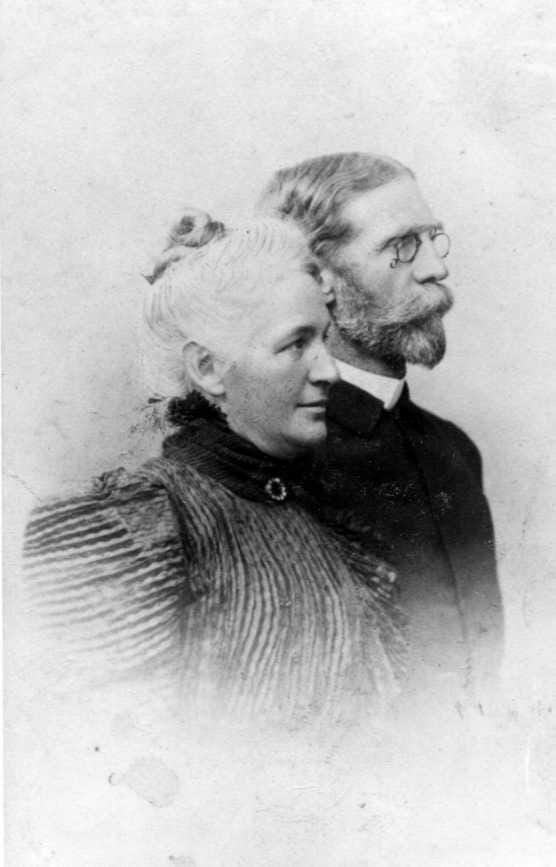
Civil War enthusiasts are likely familiar with Leverett Bradley’s war-time letters to his family memorialized in Leverett Bradley: A Soldier Boy’s Letters (1862-1865), A Man’s Work in the Ministry which was privately published a few years after his death. In 1861, at the age of fourteen, Leverett left his family’s farm in Methuen to enlist as a soldier under the command of his father Captain Leverett Bradley, in Company B of the Fourteenth Regiment of Infantry. After being reassigned near Washington, DC, in the First Massachusetts Heavy Artillery, he advanced to the rank of first lieutenant for his bravery. Upon his return to Massachusetts, Leverett became increasingly involved in missionary work and finally felt himself “called” to the cloth - much to the dismay of his parents. In 1867, he enrolled in Phillips Academy to finish his education. An excellent student and several years older than his classmates, Leverett emerged as a leader. He went off to Amherst College in 1869 to earn his degree in theology. As captain of the crew team in 1872, he famously led Amherst to victory over both Harvard and Yale.1

While a student at the Hartford Theological Institute, Leverett also worked as a tutor for Caldwell Colt, son of the famous gun manufacturer Samuel Colt. During this time, the Colt family introduced Leverett, a Congregationalist, to the Episcopal Church. On a transatlantic voyage with Caldwell in 1877, Leverett met the renowned Episcopal preacher Rev. Phillips Brooks of Boston’s Trinity Church. Although Brooks seemed unimpressed with Leverett at first, by the end of their time aboard the ship, Brooks asked him to join him as an assistant. “The vestry had been urging me to have an assistant, but I didn’t want one…but when I met Bradley, I did want him.” Brooks recalled.2

Susan Greenough Hinkley was raised in Beacon Hill in Boston and attended Trinity Church for most of her life. On her first visit to Europe at the age of twenty, her passion for art was ignited. She returned to Europe with her mother in 1875 and studied under American painter Edward Darley Boit (1840-1915) in Rome.3 In 1878, she began exhibiting her work with the American Watercolor Society. She enrolled in the Boston Museum of Fine Arts’ School of Drawing and Painting the following year.4
In the spring of 1878, after Leverett was ordained, he joined Rev. Brooks at Trinity Church. The two clergymen formed a deep friendship that would last the rest of their lives. Brooks’ magnetism and eloquence made a lasting impression on Leverett. “I fear if I had not met Brooks when I did I might have been an over-serious, if not weary, Christian!” he admitted.
As Leverett and Susan became acquainted, they soon discovered they shared a love of art, music, and zest for life. They were engaged in the summer of 1879 and married the following December. Almost immediately, the couple relocated to Maine as Leverett took on the role of rector at Gardiner’s Christ Church. His passion and enthusiasm had an uplifting effect on the community and helped to unify it. He is fondly remembered for bringing the townspeople together in the effort to construct a new library building.5
In the fall of 1884, Leverett accepted a new position as the rector of Christ Church in Andover. The Bradley family, complete with two young sons (and a daughter on the way), moved into the rectory on Central Street. To Leverett, returning to Andover felt “like going home.” He reunited with the faculty members from Phillips Academy on “the Hill.” Soon, many of them began attending his church services.6

In Bradley’s time, the Christ Church building, consecrated in 1837, was a large, neoclassical, wooden structure with four fluted columns and a bell tower.7 However, by the church’s fiftieth anniversary, the building was run down and in need of improvements. Leverett began to solicit funds for a new church building. When he approached Joseph Byers, a former Andover resident, Byers came back with an offer to pay for an entire new church building as a memorial to his parents.8 His proposal was enthusiastically received by the community, and fundraising efforts were shifted towards purchasing the adjacent lot on the corner of School Street.9
On Sunday evening, February 28, 1886, the old church caught on fire and burned to the ground.10 The fire was thought to have been caused by the overheating of the church in anticipation of the Bishop’s visit.11 Luckily, due to the severe cold and the direction of the wind, the rectory next door where the Bradley family was staying was saved. The insurance money from the fire allowed for the construction of a well-equipped parish building.12 On June 5th, a large crowd gathered as Byers and Rev. Bradley laid the cornerstone for the new, Romanesque style church. The work was completed and the new building was consecrated on January 4, 1887.13 Phillips Brooks preached the sermon.14
In addition to her role as mother and minister’s wife, Susan continued to devote her time to the development and exhibition of her art. She was a passionate watercolorist with an affinity for landscapes.

In the late 19th century, women did not have equal rights, and pursuing higher education or a career was frowned upon by society. Luckily for Susan, Leverett was a progressive husband who supported her artistic ambitions. In the 1880’s, Boston’s prominent art clubs such as the Boston Water Color Society, St. Botolph Club, and the Art Club of Boston denied membership to women. This resulted in fewer opportunities for women artists to gather together and exhibit their work. In spite of living with these inequalities in the art world, there are many examples of women artists helping each other to achieve greater success in their careers.
In 1887, Susan joined forces with fifteen other women such as Sarah Wyman Whitman (1842-1904), Sarah Choate Sears (1858-1935), Martha Silsbee (1859-1928), and Helen Bigelow Merriman (1844-1933), to form the Boston Water Color Club in 1887. The group successfully promoted the work of women watercolorists for nine years before men were permitted to join. It was responsible for increasing the visibility and status of women artists in Boston.

When the fourth Bradley child was born in 1888, artist Sarah Wyman Whitman was named his godmother. Whitman’s friendship with the Bradleys can be traced back to Trinity Church in Boston. Whitman taught Bible classes at Trinity for twenty years and also formed a friendship with Rev. Brooks. Trained under distinguished Boston painter William Morris Hunt (1824-1879) and French artist Thomas Couture (1815-1879), she was an incredibly talented and versatile artist.15 In addition to receiving recognition for her work in oils, watercolor, and pastel, she was hired as Houghton Mifflin’s first woman graphic designer. Whitman was also known for being an avid philanthropist, art collector, and patron. She was a strong proponent of higher education for women and served as a benefactor of Harvard’s Radcliffe College from its inception.

It was Whitman who designed the stained glass windows for the new Christ Church building in Andover.16
Her interest in stained glass was likely influenced by high-profile artist John La Farge (1835-1910). During the early 1880s, La Farge worked on the stained glass windows of Trinity Church, and he asked Whitman to create a carpet design to compliment them.17 Around 1884, when La Farge was unable to accept a job to design the windows for Worcester’s Central Congregational Church, he recommended Whitman in his place. It was a large commission for a woman artist with relatively little experience in glass. However, due in part to her long-time friendship with the minister’s wife, artist Helen Bigelow Merriman, she was given the job. Along similar lines, it was most certainly Whitman's close friendship with Susan and Leverett Bradley that secured her the commission at Christ Church in Andover. While the upper portion of Whitman’s windows have been obscured by the addition of a 21st century organ loft, the intricate Celtic knots and gold and green ivy motifs stand as an example of her impressive skill, filling the sanctuary with delicate beauty and warmth.
Leverett and Susan relocated to Philadelphia in the fall of 1888, when he was offered the rectorship at St. Luke’s Church. He was soon embraced by the large, urban congregation and set out to make a positive impact on the community. He served as the president of the Clericus Club, Dean of the Southeast Convocation, and board member of the Episcopal Hospital. He maintained the role of chaplain of the Third Regiment for many years and was called into active duty, during the coal miner’s strike of 1902. Suffering from increased poor health, Leverett died at the end of that year from heart complications. He was only fifty-six years old. As Rev. S. D. McConnell remembered Leverett, he attributed the success of Bradley’s ministry to the fact that “he brought to it a sound, sane, and wholesome mind, [and] a warm and sympathizing heart.” Leverett was known for his patience and tenderness, yet he commanded the respect of others and quickly won their love.
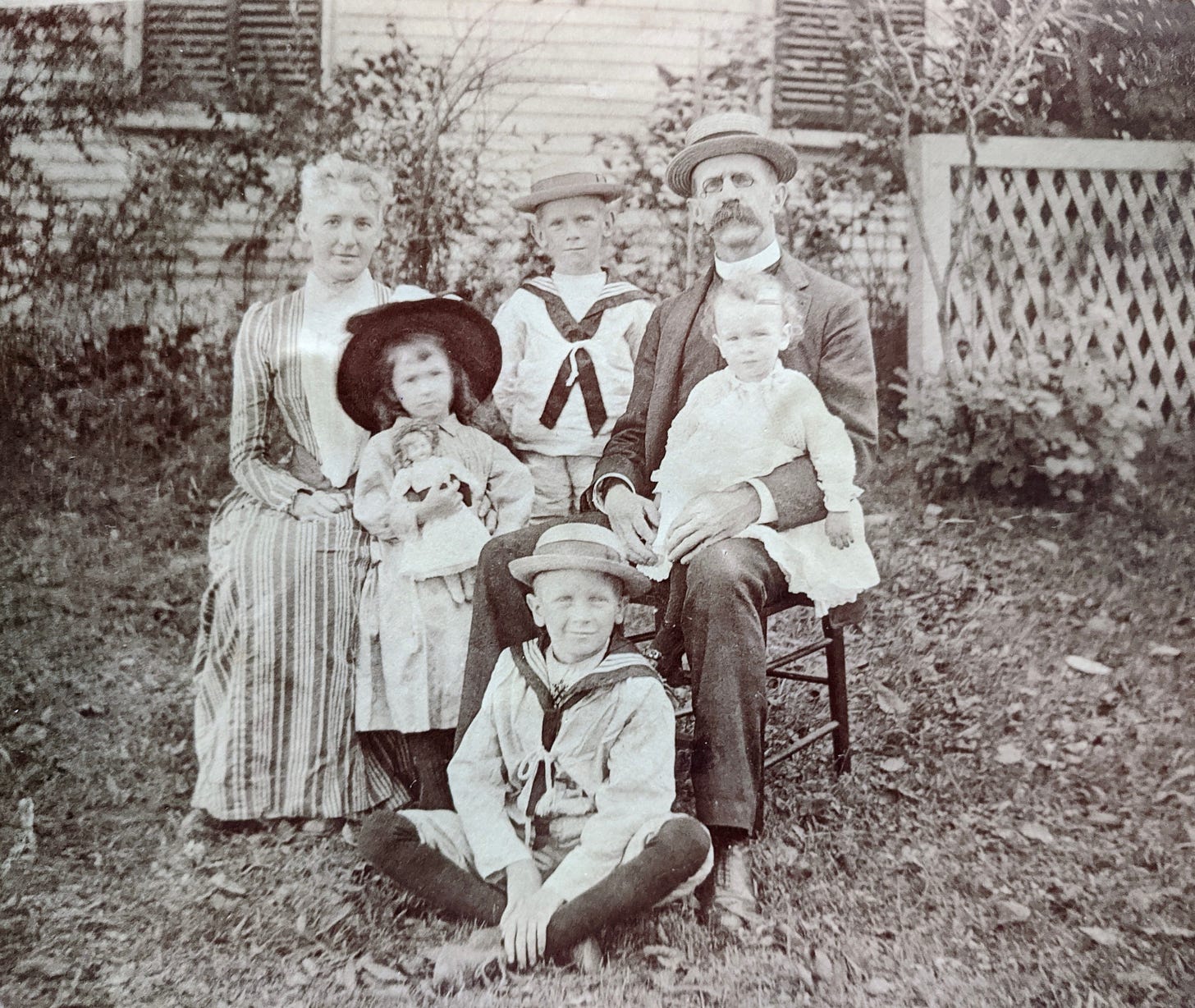
Regrettably, like many women artists from her time, Susan H. Bradley has been largely forgotten by history. New research is revealing how she served as an influential figure in the art world, helping to elevate the status of both women artists and watercolorists.
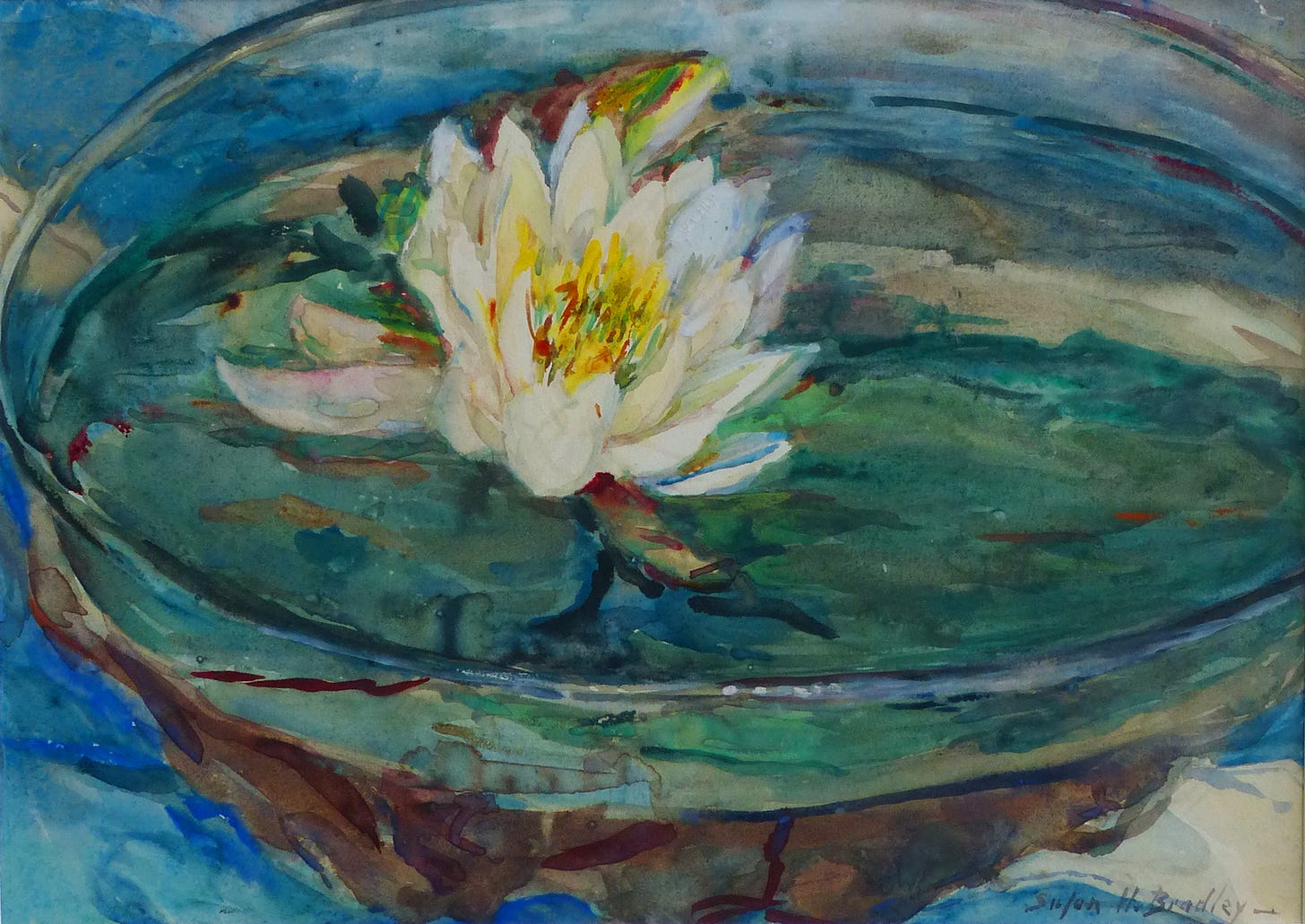
Once in Philadelphia, Susan began to exhibit her work in the city’s large annual exhibitions. She enrolled in classes at the Pennsylvania Academy of the Fine Arts (PAFA) in the early 1890s and later became a founding member of its alumni fellowship in 1897.18 She served as the chair of the art committee for the Civic Club of Philadelphia, a women’s organization dedicated to the betterment of Philadelphians through the creation of kindergarten programs, city parks, housing for the poor, etc.19 In 1897, she helped to found The Plastic Club (the term “plastic” refers to the state of an unfinished work of art) which provided exhibition opportunities, classes, and a meeting place for women artists.20 In 1900, she founded the Philadelphia Water Color Club out of her home with several other well-known watercolorists.21 Women artists were highly represented in its membership, and the club played a significant role in garnering more attention and respect for watercolorists who were being overshadowed by oil painters at the time.
Leaving Andover in 1888 was not easy for the Bradleys, and Leverett hoped one day to return. “He cherished the idea that Andover would be a resting place for his old age,” Susan explained.22 Although he died in Philadelphia, Andover’s Christ Church now serves as his final resting place. An ornate double headstone near the rear left corner of the church marks the graves of both Leverett and Susan H. Bradley. After Leverett died, the church’s rector and wardens wrote that Leverett’s memory “is warmly cherished in the parish; and it is a source of much satisfaction that his body now rests in the shadow of the beautiful church into which he built so much of himself, and which he loved so dearly.” Susan wrote that “his service to others was in giving himself.” In truth, she gave of herself too - paving the way for other women artists and watercolorists to achieve greater success, through her own perseverance and the creation of new, supportive art organizations. Above her grave is an inscription that reads: “True to her chosen art, she kindled a light to guide and cheer throughout the years.”
“True to her chosen art, she kindled a light to guide and cheer throughout the years.”
For anyone who feels themselves uplifted while gazing at the bright, fresh watercolors of Susan H. Bradley, these words still ring true and stand as testament that her legacy endures.

Thank you for reading! Please share your thoughts, questions, and stories by leaving a comment. We love to hear from History Buzz readers.
Additional Resources:
National Museum for Women in the Arts Blog Post on Susan H. Bradley: https://nmwa.org/blog/artist-spotlight/susan-h-bradley-a-rediscovered-powerhouse
The Pennsylvania Academy of the Fine Arts Digital Archives:
https://pafaarchives.org/item?search=susan+h.+bradley
Leverett Bradley, Susan H. Bradley, Phillips Brooks, Leverett Bradley: A Soldier-Boy's Letters, 1862-1865; A Man's Work in the Ministry, 66.
L. Bradley, S. H. Bradley, and Brooks, Leverett Bradley, 66-67.
Laura Richards, “Susan H. Bradley,” The American Magazine of Art, July 1924, Vol. 15, No. 7 (July 1924), 372.
Catalogue of the Exhibition to Commemorate the Twenty-fifth Anniversary of the School of Drawing and Painting, Museum of Fine Arts, April 6 - April 28, 1901 [Exhib. Cat], 9.
L. Bradley, S. H. Bradley, and Brooks, Leverett Bradley, 64-66.
Ibid, 70.
Scott H. Paradise, “Christ Church History,” Andover Center for History and Culture, Christ Episcopal Church Research Files.
L. Bradley, S. H. Bradley, and Brooks, Leverett Bradley, 70.
Ibid.
“Consecration Christ Church, Andover, Mass, Tuesday, Jan. 4, 1887,” (Boston: T. R. Marvin & Son, 1887), 31.
L. Bradley, S. H. Bradley, and Brooks, Leverett Bradley, 70.
“Consecration Christ Church,” 32.
Ibid.
L. Bradley, S. H. Bradley, and Brooks, Leverett Bradley, 70.
Bonnie Hurd Smith, “Sarah Wyman Whitman,” Boston Women's Heritage Trail, 2022, https://bwht.org/sarah-wyman-whitman.
“33 Central Street,” Andover Historic Preservation, accessed November 13, 2022, https://preservation.mhl.org/33-central-st.
Betty S. Smith, “Sarah Wyman Whitman,” Harvard Magazine, August 5, 2020, https://www.harvardmagazine.com/2008/01/sarah-wyman-whitman.
“For An Alumni Fellowship: Former Students of the Pennsylvania Academy of Fine Arts to Organize,” The Times (Philadelphia, PA), April 15, 1897, 9.
The Philadelphia Inquirer, March 25, 1894, 13.
Plastic Club Records, 1897-1972. Archives of American Art, Smithsonian Institution.
Richards, “Susan H. Bradley,” 373.
L. Bradley, S. H. Bradley, and Brooks, Leverett Bradley, 70.


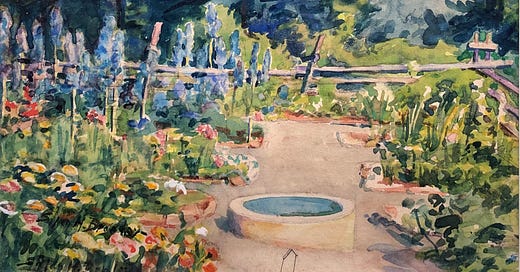


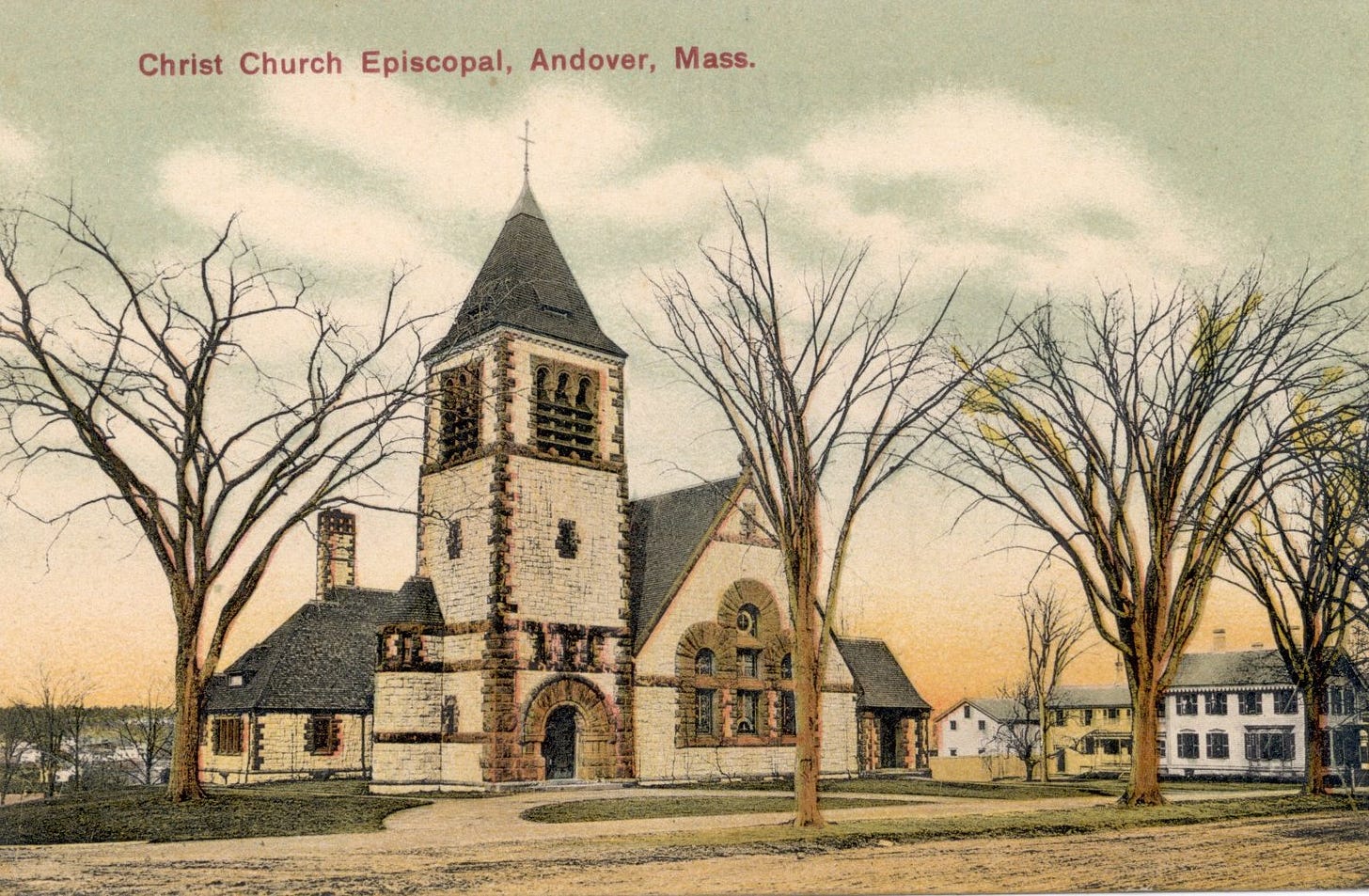
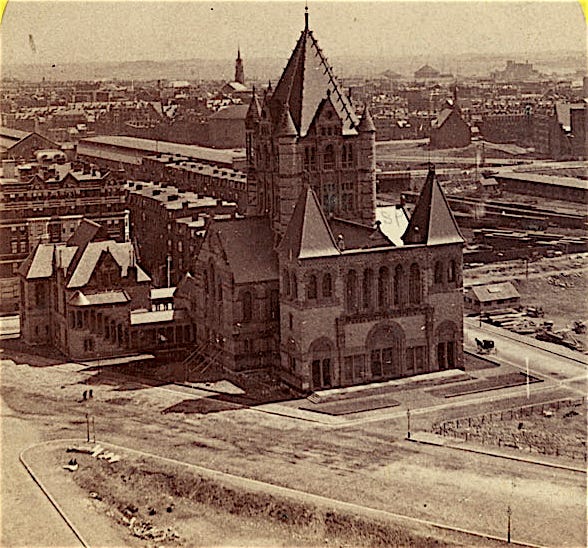
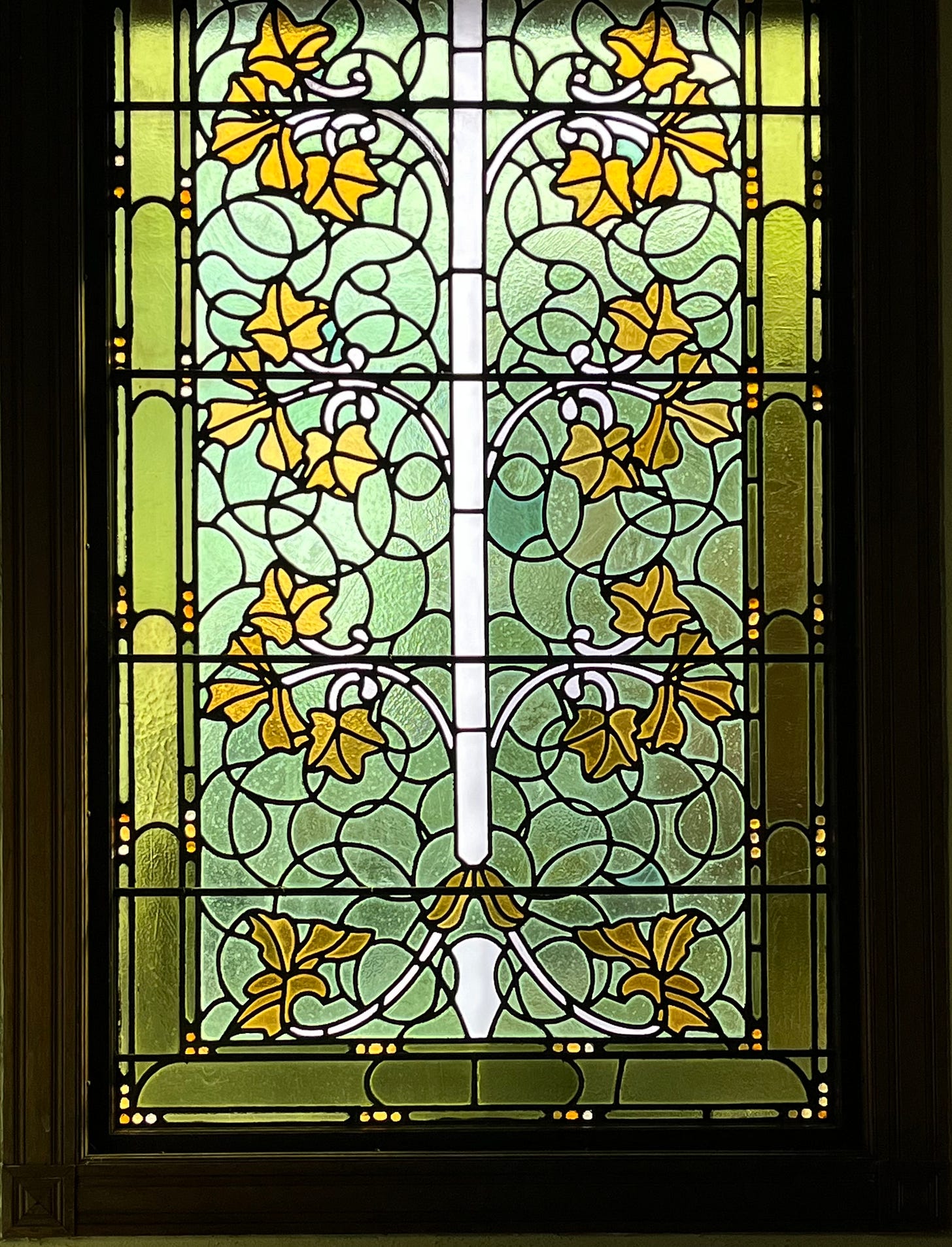
Wonderful article on two great women artists and Rev. Bradley, all who contributed to Christ Church and the community.
This was a fascinating piece. Thank you, Andrea.